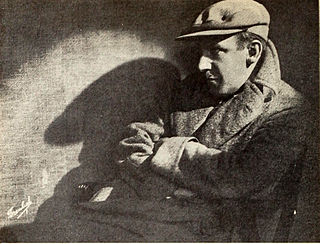
Tod Browning was an American film director, film actor, screenwriter, vaudeville performer, and carnival sideshow and circus entertainer. He directed a number of films of various genres between 1915 and 1939, but was primarily known for horror films. Browning was often cited in the trade press as "the Edgar Allan Poe of cinema."

Creighton Tull Chaney, known by his stage name Lon Chaney Jr., was an American actor known for playing Larry Talbot in the film The Wolf Man (1941) and its various crossovers, Count Alucard in Son of Dracula, Frankenstein's monster in The Ghost of Frankenstein (1942), the Mummy in three pictures, and various other roles in many Universal horror films, including six films in their 1940s Inner Sanctum series, making him a horror icon. He also portrayed Lennie Small in Of Mice and Men (1939) and played supporting parts in dozens of mainstream movies, including High Noon (1952), The Defiant Ones (1958), and numerous Westerns, musicals, comedies and dramas.
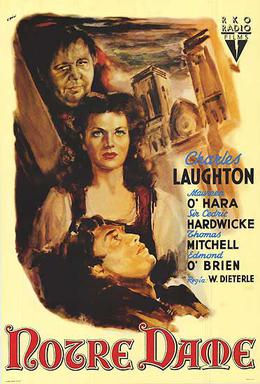
The Hunchback of Notre Dame is a 1939 American romantic drama film starring Charles Laughton and Maureen O'Hara. Directed by William Dieterle and produced by Pandro S. Berman, the film is based on Victor Hugo's 1831 novel. The film is also noted for being the first film ever shown at the Cannes Film Festival before the rest of the festival was cancelled due to the start of World War II.

Douglass Rupert Dumbrille was a Canadian actor who appeared regularly in films from the early 1930s.
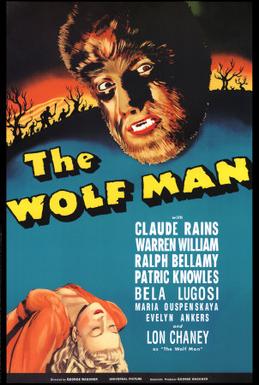
The Wolf Man is a 1941 American gothic horror film written by Curt Siodmak and produced and directed by George Waggner. The film stars Lon Chaney Jr. in the title role. Claude Rains, Warren William, Ralph Bellamy, Patric Knowles, Bela Lugosi, Evelyn Ankers, and Maria Ouspenskaya star in supporting roles. The title character has had a great deal of influence on Hollywood's depictions of the legend of the werewolf. The film is the second Universal Pictures werewolf film, preceded six years earlier by the less commercially successful Werewolf of London (1935). This film is one of the Universal Monsters movies, and garnered great acclaim for its production.

Across the Wide Missouri is a 1951 American Technicolor Western film based on historian Bernard DeVoto's eponymous 1947 book. The film dramatizes an account of several fur traders and their interaction with the Native Americans.

Frankenstein Meets the Wolf Man is a 1943 American horror film directed by Roy William Neill and starring Lon Chaney Jr. as Larry Talbot and Bela Lugosi as Frankenstein's monster. The script, written by Curt Siodmak, follows The Ghost of Frankenstein (1942) and The Wolf Man (1941), though with a number of retcons. Most significantly, Talbot only transforms into werewolf form during a full moon, which became a standard part of werewolf lore. The film involves Larry Talbot, who is resurrected when his tomb is disturbed. His search for a way to end his seeming immortality leads to his befriending Frankenstein's monster.

House of Frankenstein is a 1944 American horror film starring Boris Karloff, Lon Chaney Jr. and John Carradine. It was directed by Erle C. Kenton and produced by Universal Pictures. Based on Curt Siodmak's story "The Devil's Brood", the film is about Dr. Gustav Niemann, who escapes from prison and promises to create a new body for his assistant Daniel. Over the course of the film, they encounter Count Dracula, the Wolf Man and Frankenstein's monster. The film is a sequel to Frankenstein Meets the Wolf Man (1943).

House of Dracula is a 1945 American horror film released and distributed by Universal Pictures. Directed by Erle C. Kenton, the film features several Universal Horror properties meeting as they had done in the 1944 film House of Frankenstein. The film is set at the castle home of Dr. Franz Edelmann, who is visited first by Count Dracula and later by Larry Talbot, the Wolf Man, who are trying to cure their vampirism and lycanthropy, respectively. Talbot is eventually cured, which leads him to discover the body of Frankenstein's monster in a cave below the base of the castle. Edelemann takes the monster's body back to his laboratory but finds Count Dracula has awakened and by attacking his assistants, he captures Edelmann and forces a reverse blood transfusion, which gives Edelmann a split personality and makes him a killer.
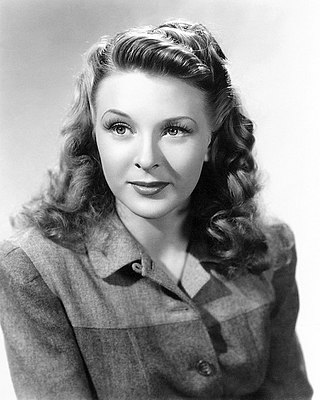
Evelyn Felisa Ankers was a British-American actress who often played variations on the role of the cultured young leading lady in many American horror films during the 1940s, most notably The Wolf Man (1941) opposite Lon Chaney Jr., a frequent screen partner.

The Ghost Breakers is a 1940 American mystery/horror comedy film directed by George Marshall and starring Bob Hope and Paulette Goddard. It was adapted by screenwriter Walter DeLeon as the third film version of the 1909 play The Ghost Breaker by Paul Dickey and Charles W. Goddard.

The Universal Monsters media franchise includes characters based on a series of horror films produced by Universal Pictures and released between 1913–1956.

Tala Birell was a Romanian-born stage and film actress.
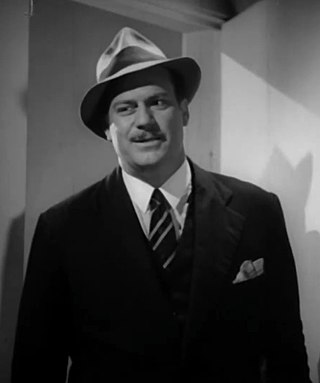
Richard Alexander was an American film character actor.

Clarence Muse was an American actor, screenwriter, director, singer, and composer. He was the first African American to appear in a starring role in a major studio film, 1929's Hearts in Dixie. He acted for 50 years, and appeared in more than 150 films. He was inducted into the Black Filmmakers Hall of Fame in 1973.
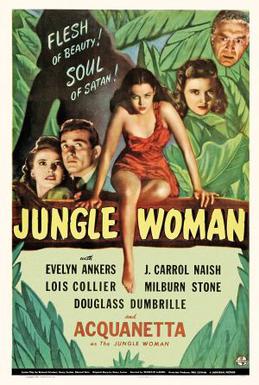
Jungle Woman is a 1944 American horror film directed by Reginald LeBorg. The film stars Evelyn Ankers, J. Carrol Naish, Samuel S. Hinds, Lois Collier and Acquanetta. Jungle Woman was the second film in Universal's Cheela, the Ape Woman series, preceded by Captive Wild Woman.

Martin Kosleck was a German film actor. Like many other German actors, he fled when the Nazis came to power. Inspired by his deep hatred of Adolf Hitler and the Nazis, Kosleck made a career in Hollywood playing villainous Nazis in films.

Tell It to the Judge is a 1949 American romantic comedy film directed by Norman Foster and starring Rosalind Russell as a divorcee who tries to get back her ex-husband, played by Robert Cummings.

Liam Redmond was an Irish character actor known for his stage, film and television roles.

The Inner Sanctum Mysteries film series consists of American classic-horror mystery films, based on and inspired by the works of Himan Brown, and the stories printed by Simon & Schuster.




















